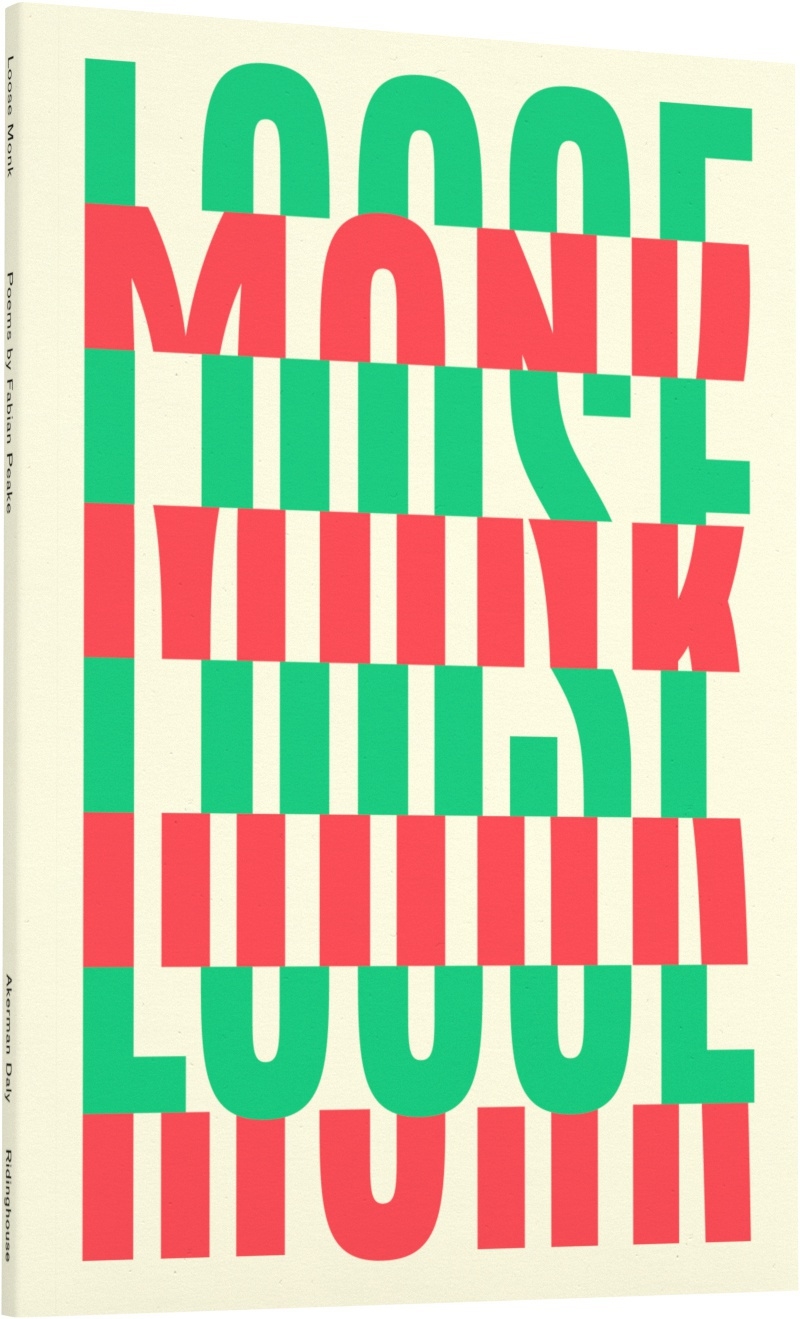In this smartly designed (by Fraser Muggeridge) collection of Fabian Peake’s poems, Peake’s words splutter across the page without recourse to poetry’s classical constitution. In ‘amalgam’ (2010), for instance, the title word seems to be endlessly repeated (though on closer inspection it’s more complicated than that: the poem starts ‘amalgammaglamaamalgammaglam…’ before segueing into ‘maglamaamalgammaglamaamalgammaglamaa…’ ), creating a block of type.
Yet while in some instances Peake is operating within the tradition of concrete poetry and plays with the shape of the whole work (in the mode of fellow visual-artist-turned-poet the late Ian Hamilton Finlay, or perhaps most famously E.E. Cummings and Apollinaire), his interest seems mostly piqued by the spatial qualities within a poem. Peake employs large, lingering spaces between words or phrases, suggestive of ponderous gaps in the reading. ‘Mistake’ (2012), for example, is made up of delightful islands linking up to an atmospheric archipelago whole. It begins, to give you a taste:
the mistake was in the sky
my hand
bathroom window back the
filthy as a thought
Despite the abstract qualities, the poems are frequently adept at conveying narrative. Take the opening lines of ‘Hiatus’ (2001): ‘….. would of course be … so … / … realised that Gillian’s ancestor ….. / some sort of fight’. One can imagine a family feud, perhaps spoken of over the telephone. This feeling of disruption, of being asked to imagine the full story, continues in my favourite work of the volume, ‘this alley a brick wall’ (2011). It starts, ‘this alley a brick wall / this from or is a / plume out I notice steam / opposite out of the wall – / smoke the my of itself.’ When one reads the poem aloud, the erroneous words, and the discordant ordering, feels as if the poem’s transmission is being disturbed, uneasily interrupted. Yet on the page, there’s a visual effect, more akin perhaps to digital corruption, of something breaking up. The poem, in effect and typical of this often-mesmerising collection, has two almost independent lives: one aural and narrative, one visual and abstract.
This article was first published in the December 2014 issue.
